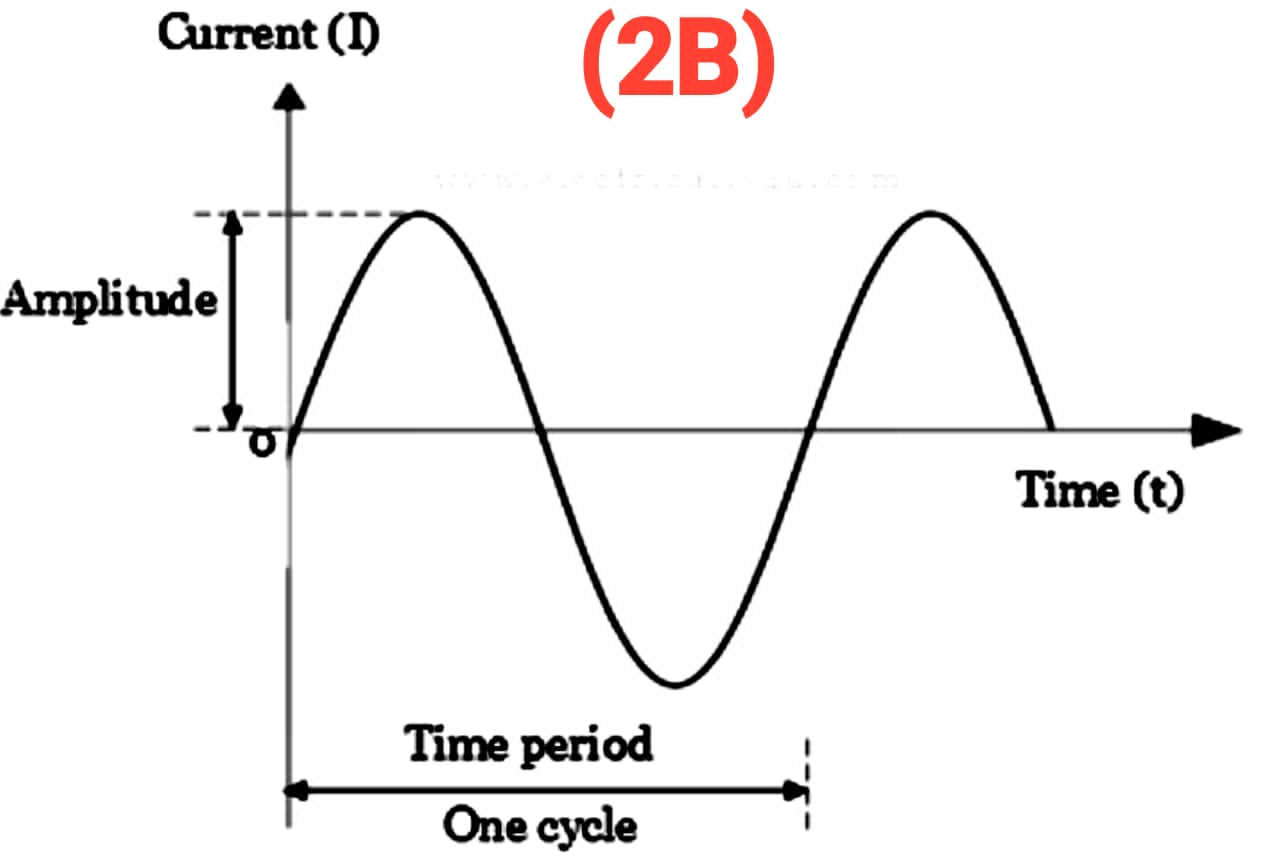
WAEC 2025/2026 Basic Electricity Answers
Basic Electricity Objectives
01-10: BABDAABDCC
11-20: CABADCCCDB
21-30: CBADDCDDBB
31-40: BCDAABCBCA
41-50: DBCBCDCADB
COMPLETED
(1a)
Lenz’s Law states that the direction of the induced current in a conductor is such that it opposes the change in magnetic flux that caused it.
(1b)
(PICK ANY TWO)
(i) Controllable Magnetic Strength: The magnetic field strength of an electromagnet can be adjusted by varying the current.
(ii) On/Off Functionality: Electromagnets can be turned on and off, providing flexibility for different applications.
(iii) Stronger Magnetic Field: Electromagnets can produce stronger magnetic fields compared to permanent magnets of the same size.
(iv) Adjustable Shape and Size: The design of electromagnets can be modified easily to suit specific requirements, such as the number of coils or size.
(v) No Loss of Magnetism Over Time: Unlike permanent magnets, electromagnets do not lose their magnetic strength over time unless the current is turned off.
(1c)
Given:
Number of turns (N) = 10
Current (I) = 3A
Length of magnetic path (L) = 25cm
Length to meters (L) = 0.25m
H = (N x I)/(L)
H = (10×3)/(0.25)
H = (30)/(0.25)
H = 120 A/m
(2a)
Impedance (Z) is the total opposition to the flow of alternating current (AC) in a circuit, which combines both resistance (R) and reactance (X).
(2b)

(2ci)
Given:
Output RMS Voltage Vrms = 220V
Maximum voltage (Vmax) = Vrms x (√2)
Vmax = 220 x (√2)
Vmax = 220 x 1.414
Vmax = 310.88V
(2cii)
Average value (Vavg) = (2/π) x Vmax
Vavg = (2/π) x 310.88
Vavg = 0.636 x 310.88
Vavg = 197.25V
(3a)
10 lamps at 60 watts each → 10×60 = 600W
5 ceiling fans at 74 watts each → 5×74 = 370W
5 air conditioners at 746 watts each → 5×746 = 3730W
1 electric cooker at 2500 watts → 2500 W
Total power = 600 + 370 + 3730 + 2500 = 7200 W = 7.2kw
(3b)
Energy consumed = Power × Time
= 7.2kw × 5hrs = 36 kWh
Meter reading = 36 kWh
(3c)
(i) Overheating of the cable
(ii) Risk of fire
(iii) Voltage drop and reduced performance of the cooker
(4a)
(4b)
Using the fomula
Back EMF (Eb) = V – la x Ra
Where:
V = Supply voltage = 240 V
Eb = Back emf = 180 V
la = Armature current = 15 A
Ra = Armature resistance (what we want to find)
(i) Armature Resistance:
Rearranging the formula:
Ra = (V – Eb) / la
Ra (240-180)/15 = 60/15 = 4 Ω
(ii) Starting Current:
At start-up, the back emf Eb=0 (since the motor is not rotating).
:. Istart =V/Ra=240/4 = 60A
(5a)

(5b)
(PICK ANY ONE)
(i) Voltage Step-Up: Increases voltage at the generation end for efficient long-distance transmission (reduces current and power losses).
(ii) Voltage Step-Down: Decreases voltage at the distribution end to safe levels suitable for homes and industries.
(iii) Impedance Matching: Helps in matching impedance between components for maximum power transfer and system efficiency.
(iv) Electrical Isolation: Provides isolation between different parts of the system to enhance safety and system protection.
(6a)
Lightning Arrester:
(i) Diverts lightning surges to earth.
(ii) Protects transformers from high voltage.
(iii) Prevents damage to substation equipment.
(iv) Limits transient overvoltages.
(v) Ensures safety during lightning storms.
(6b)
Circuit Breaker:
(i) Interrupts current during faults.
(ii) Operates automatically or manually.
(iii) Protects equipment from overload.
(iv) Isolates faulted sections.
(v) Ensures system stability.
(6c)
Isolator:
(i) Disconnects parts of the system.
(ii) Used during maintenance.
(iii) Operates only under no load.
(iv) Provides visible isolation.
(v) Enhances safety for workers.
(7ai)
(i) Reduces equipment failure: Regular maintenance helps identify and fix potential problems before they cause breakdowns.
(ii) Extends equipment lifespan: Preventive care ensures devices operate efficiently for a longer time.
(7aii)
(i) Worn-out or faulty capacitor, which can prevent the fan from starting or running at proper speed.
(ii) Damaged or loose wiring, which may lead to malfunction or electrical hazards.
(7bi)
Possible Cause of the Fault:
The possible cause is a short circuit or insulation failure in the kettle, causing the metal body to become energized.
(7bii)
Corrective Action:
Disconnect the kettle from power immediately and have it inspected and repaired or replaced by a qualified electrician.
(7biii)
Preventive Measure:
Regular inspection and maintenance of electrical appliances, including checking for worn-out insulation, damaged cords, or faulty grounding, can prevent such faults.
Share This Post: This post can be helpful to your friends or classmates, you can share it using the buttons below!











6 Comments
Science question and answer
Hi
Science questions and answers
Good
Answers for chemistry practical
Chat Mr Henry on whatsapp 08118460973